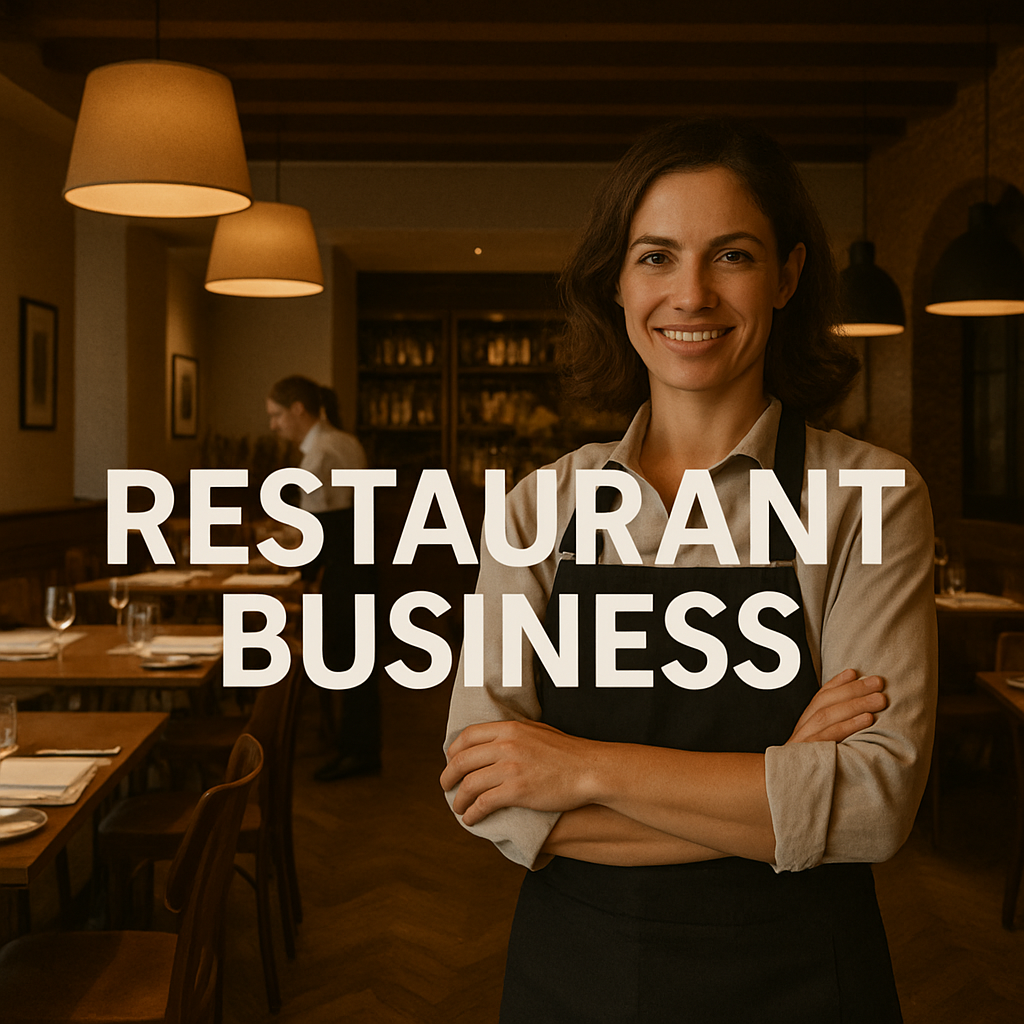- Decide on a cuisine type: What kind of food will you serve? (e.g., Italian, Mexican, vegan, etc.)
- Target audience: Who are you trying to attract?
- Ambiance and service style: Casual dining, fine dining, fast food, etc
4 easy steps to PAN Application
-
Fill up the Form.
-
Submit the documents.
-
Pay only professional fee.
-
Get your PAN Application.
PROCESS OF STARTING A RESTAURANT BUSINESS
-
Decide the Restaurant Type
Choose the type of restaurant based on your budget, location, and target audience such as (Dine-In Restaurants, Quick-Service Restaurants (QSR), Ice-cream Parlor, Cloud, Buffet Restaurant, etc)
-
Conduct Market Research
- Study competitors and identify gaps in their offerings.
- Understand the customer preferences (vegetarian/non-vegetarian, North Indian/South Indian, fusion food, etc.).
-
Register the Business & Get Licenses
- Business Registration: Choose Sole Proprietorship, LLP, or Private Limited Company.
- GST Registration, Trade License, Fire & Safety License, Liquor License, FSSAI License, Music License etc.
-
Secure Funding for Your Restaurant
- Self-Funding: Savings or family support.
- Bank Loans like MSME or Mudra loans, Angel Investors For high-scale restaurants.
- Partnerships: Find business partners or co-investors.
-
Choose a Suitable Location
- Should have high footfall (near markets, colleges, offices, malls).
- Ensure proper ventilation, kitchen space, and dining area.
- Check for parking space availability.
-
Set Up the Restaurant Infrastructure
- Design an attractive & comfortable ambiance. Buy furniture, kitchen equipment, utensils.
- Install a POS system for billing & orders and Ensure proper hygiene & safety standards.
-
Hire & Train Restaurant Staff
- Chefs, Cooks, Waiters & Service Staff, Delivery Personnel (If offering online delivery.)
- Cashier & Manager: To manage operations.
-
Marketing & Branding
- Online Marketing: Create a website, use Instagram, Facebook, and WhatsApp for promotions.
- Offline Marketing: Distribute flyers, banners, offer opening discounts.
- Food Delivery Apps: Partner with Zomato, Swiggy, Uber Eats.

TYPES OF RESTAURANT BUSINESS
DINE-IN RESTAURANTS
These are traditional restaurants where customers sit, order, and dine.
a) Fine Dining Restaurant
- Luxury experience with elegant interiors, premium service, and high-quality food.
- Requires high investment.
- Examples: Taj, ITC, Marriott restaurants.
b) Casual Dining Restaurant
- Affordable version of fine dining with comfortable seating.
- Moderate pricing, good ambiance.
- Examples: Barbeque Nation, Mainland China.
c) Family Restaurant
- Affordable version of fine dining with comfortable seating.
- Moderate pricing, good ambiance.
- Examples: Barbeque Nation, Mainland China.
d) Theme-Based Restaurant
- Based on a specific theme like Bollywood, Village Style, Jungle, or Train Dining.
- Attracts youth and families.
- Examples: Jungle Safari, Village Theme Dhaba.
QUICK-SERVICE RESTAURANTS (QSR)
These are traditional restaurant that serves food quickly and at a lower cost. QSRs are also known as fast-food restaurants.
a) Fast Food Restaurant
- Serves burgers, pizza, sandwiches, momos, etc.
- Low cooking time, high customer turnover
b) Cafeteria / Café
- Focuses on coffee, tea, and snacks.
- Ideal for students, working professionals.
- Examples: Café Coffee Day, Starbucks.
c) Dessert Parlour / Ice Cream Shop
- Specializes in cakes, pastries, ice creams, and sweets.
- Examples: Naturals, Amul Ice Cream, Bikanervala.
ICE-CREAM PARLOR
The Ice-Cream parlor format usually serves the different types of ice-creams, shakes, and ice-cream cakes. Ice-cream parlors have come up to be the most innovative concepts in terms of process and service levels, unlike the traditional way of serving the regular flavors. Today concepts like cold stone ice cream, nitrogen-based ice-cream, and live ice-cream making are catching up the trend. Ice-cream parlor may offer a sitting and delivery service.
CLOUD KITCHEN
A cloud kitchen utilizes a commercial kitchen for the purpose of preparing food for delivery or takeout only, with no dine-in customers. Cloud kitchens enable restauranteurs to expand an existing restaurant or start a virtual brand at minimal cost.
- No dine-in space, only home delivery through apps like Zomato, Swiggy.
- Low operational cost, high profit margin.
- Examples: Faasos, Behrouz Biryani.
BUFFET RESTAURANT
A buffet restaurant is a restaurant where customers serve themselves from a variety of food on display. Buffets are a popular choice for large groups and families with picky eaters.
- Fixed price menu, unlimited food.
- Great for group dining.
- Examples: Barbeque Nation, Absolute Barbecue.
DHABA / HIGHWAY RESTAURANT
A dhaba is a roadside restaurant in India that serves local food and is often located on highways. Dhabas are popular with long-distance travelers and are known for their large portions, quick service, and affordable prices.
- Traditional Indian roadside eateries serving Punjabi, South Indian, or local dishes.
- Popular along highways.
- Examples: Pind Balluchi, Amrik Sukhdev Dhaba.
FOOD TRUCK
A food truck is a mobile restaurant that cooks and sells food from a large vehicle or trailer. Food trucks can sell a variety of food, including fast food, gourmet food, and beverages.
- Mobile restaurant serving fast food.
- Low investment, high profit margin.
- Examples: The Rolling Joint, Spicy Wheels.
BAR / PUB / LOUNGE
A “bar” is a place where you can buy and drink alcoholic beverages, typically with a counter where you stand to order drinks; a “pub” is a type of bar, often considered more casual and community-oriented, usually serving food alongside drinks; and a “lounge” is a more relaxed, sophisticated space within a bar or hotel, often with comfortable seating and a focus on conversation and cocktails over loud music.
- Focus on alcohol and snacks.
- Requires a liquor license.
- Examples: Social, Hard Rock Café.
BAKERY & CONFECTIONERY
A bakery is a place that sells baked goods, while confectionery is the art of making sweet foods.
- Sells bread, pastries, cakes, and cookies.
- Can be home-based or retail store.
- Examples: Monginis, Theobroma.
REQUIREMENTS OF RESTAURANT BUSINESS
CONCEPTUALIZE YOUR RESTAURANT
CREATE A BUSINESS PLAN
- Market analysis: Research competition in your area
- Financial projections: Estimate start-up costs, revenue, and potential profitability
- Menu development: Design a menu with unique dishes that align with your concept
SECURE FUNDING
- Personal savings: Consider your own available funds
- Loans: Explore options from banks or other lenders
- Investors: Seek potential partners to contribute capital
FIND A LOCATION
- Consider foot traffic and demographics: Choose a spot with high visibility and a suitable customer base
- Lease negotiations: Negotiate rent and lease terms with the property owner
OBTAIN NECESSARY PERMITS AND LICENSES
- Health department permits: Ensure compliance with food safety regulations
- Business licenses: Register your business with the appropriate government agencies
DESIGN AND BUILD OUT YOUR RESTAURANT
- Kitchen layout: Plan the kitchen layout for efficient food preparation
- Dining area design: Create an atmosphere that aligns with your concept
HIRE STAFF
- Kitchen staff: Chefs, cooks, line cooks
- Front-of-house staff: Servers, bartenders, hosts
DEVELOP MARKETING STRATEGIES
- Online presence: Create a website and social media accounts
- Local advertising: Utilize flyers, community events, and partnerships
- Grand opening promotions: Offer special deals to attract initial customers
DOCUMENTS FOR RESTAURANT BUSINESS
REGISTERING BUSINESS ENTITY
To start a restaurant, the owner must first choose the business entity. Business owners must decide whether to start the restaurant alone as a proprietorship firm or in partnership with others as a partnership firm. They may also establish a private limited company. Instead of choosing a proprietorship or partnership firm, it is beneficial for restaurant owners to choose the One Person Company (OPC) or Limited Liability Partnership (LLP) business structure. A sole proprietorship or partnership firm does not have a separate legal entity status and thus is difficult to obtain funds compared to OPC and LLP. When the owner plans to establish a chain of restaurants or create a franchising model, a private limited company structure is recommended.
TRADEMARK REGISTRATION
When a business owner plans to open a chain of restaurants or invests a significant amount of money and time into branding, it is recommended to obtain trademark registration for the restaurant name or brand. Though trademark registration is not mandatory, it is recommended as it will protect the restaurant name or brand from third parties. Third parties cannot open a restaurant with the same name or brand that has a trademark registration. It deters the use of branding by competitors.
BUSINESS LICENSE
The restaurant must mandatorily obtain a trade license from the municipal corporation. The municipal corporation can shut down restaurants when they do not have a trade license. Thus, restaurant owners need to apply for and renew their trade licenses every year. A business owner also needs to obtain a No Objection Certificate (NOC) from at least three neighbours. When a restaurant provides liquor to its customer, it must also obtain a liquor license from the Local Excise Commissioner. A NOC from the fire department is also a must for any food business.
SHOP AND ESTABLISHMENT ACT REGISTRATION
The Shop and Establishment Act Registration is regulated by the Department of Labour of the state. The Shop and Establishment Act regulates any premises where a trade, business or profession is carried out. Thus, all restaurants must apply for and obtain a Shop and Establishment Act Registration. It is issued by the State Chief Inspector of the Department of Labour.
ENVIRONMENTAL CLEARANCE
Environmental clearance for a restaurant is a government approval that ensures the restaurant complies with environmental regulations and reduces pollution. It also helps conserve resources. The Ministry of Environment, Forest and Climate Change (MoEFCC) and the State Environment Impact Assessment Authority (SEIAA) issue environmental clearance (EC) certificates.
A SIGNAGE LICENSE
Signage License This is a legal permit which allows allows a restaurant to legally use signs, graphics, and paintings to market itself. This helps restaurants attract customers and maximize profits. To get the signage license, you need to approach the local authority or the Municipal Corporation.
GENERATOR LICENSE
A generator license is a permit that allows a restaurant to install, run, and maintain a backup generator. It is required to ensure that the generator is safe and doesn’t cause power fluctuations. The state or local electricity regulatory authorities issue the license. Helps avoid loss of inventory and food spoilage and keep the restaurant open during power outages so that customers go happy.
MUSIC LICENSE
A music license for a restaurant allows the use of copyrighted music in a commercial setting. It’s required by law to play music in restaurants, pubs, bars and hotels that’s pre-recorded on CDs, cassettes, or other media. The Indian Performing Right Society (IPRS) and Phonographic Performance Limited (PPL) are organizations that issue music licenses. IPRS license enables public performances, attracting more customers and enhancing the business.
RESTAURANT LIQUOR LICENSE
This is the most common type of liquor license. It is also known as the “all liquor license” because it generally allows one to serve all types of alcohol. … So, in simplest terms, a liquor license is a legal authorization to sever alcohol.
FIRE SAFETY CERTIFICATE
A fire safety certificate for a restaurant is a document that confirms the restaurant meets fire safety standards. It’s also known as a fire license or no-objection certificate (NOC). The local fire department or municipal authority issues the certificate. Restaurants must comply with NFPA 17A and NFPA 96 standards & Restaurants that are assembly occupancies of new construction will require sprinkler protection
FSSAI LICENSE
The food safety standard authority of India (FSSAI) has made it mandatory for all hotels to obtain FSSAI Food safety Registration or license in order to start their venture. Ensures food quality and safety, Helps restaurants comply with food safety guidelines, Builds consumer confidence, Helps restaurants standardize kitchen operations, and Makes it easier to get funding from investors.
GST REGISTRATION
Restaurants in India are required to register under GST mandatorily. GST registration is state-specific. Thus, if a restaurant has outlets in different states, it needs to have a separate GST registration for each state.
Why us
Recognized by Govt. of India
End-to-End Financial & Compliance Solutions
ISO Certified
Data Security & Confidentiality
Trained & Professional Team
On Time, Every Time - We Respect Deadlines
Technology Driven
Transparent & Ethical Practices
Support for Startups & MSMEs
Compare with other Restaurant Business
Pick a Business Structure That Works Best For Your Business
- Investment
- Space Required
- Licenses Required
- Profit Margin
- Break-Even Period
- Customer Base
- Challenges
- Manpower Requirement
- Target Market
- Marketing Strategy
- Revenue Streams
Here are some Frequently Asked Questions about Restaurant Business
How much does it cost to start a restaurant in India?
The cost varies depending on the restaurant type:
- Small Café / Food Truck / Cloud Kitchen: ₹5 – ₹15 lakh.
- Casual Dining / QSR: ₹15 – ₹50 lakh.
- Fine Dining / Theme-Based / Large Restaurants: ₹50 lakh – ₹2 crore.
Licenses & Legal Requirements
- FSSAI License (Food Safety)
- GST Registration
- Trade License (Municipal Corporation)
- Fire Safety Certificate
- Liquor License (if serving alcohol)
- Shops & Establishments License
What is the best location for a restaurant?
- High footfall areas like markets, malls, IT parks, near colleges, or highways.
- Easy accessibility & parking are important.
How much space is needed for a restaurant?
- Small Café / QSR / Cloud Kitchen: 300 – 800 sq. ft.
- Casual Dining / Family Restaurant: 1,000 – 2,500 sq. ft.
- Fine Dining / Multi-Cuisine: 3,000+ sq. ft.
What are the key roles in a restaurant?
- Chef & Kitchen Staff
- Service Staff (Waiters, Hosts)
- Cashier & Billing Staff
- Cleaning & Maintenance Staff
- Marketing & Online Order Management Staff
Leave Your Accounting to Us and File GST Accurately.
Save time, money, and taxes with our AI based Business softwares and expert accountants.
















